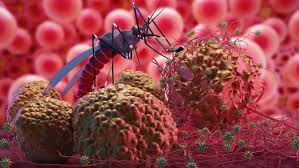Infections - Prevention, Diagnosis & Treatment
Things you should know about Malaria
By A.S. (staff writer) , published on September 21, 2021

Medicine Telehealth Health Traveller's guidance for Malaria Malaria
You will be stunned to know that the leading cause of death in Africa is Malaria. Yes, you read that right. According to the World Malaria Report published in 2019. Nigeria recorded the highest percentage of malaria cases across the globe (more than 25% of the global malarial cases in 2018).
Unfortunately, with the highest morbidity rate, the mortality rate was also reported with an astonishing percentage comprising of 24% of the global malarial deaths. Malaria is a mosquito-borne disease that primarily affects humans. The infection rate is higher in the rural population than in the urban population. As per reports, disease prevalence among children under five years of age was found to be 27 %. Contrary to the discussion, Nigeria recorded a double number of cases in rural population than the urban targeting specifically the people living in slums or with low socioeconomic groups.
Etiology and clinical picture
Malaria is caused by a parasite belonging to the genus plasmodium. Four species of plasmodium have been discovered while the Plasmodium falciparum species is considered to be the main infectious agent affecting the population in Africa. The other species, P malaria, P vivax, P ovate are also responsible for malaria. The symptoms start appearing on the I0th to 4th week of the infection depending on the causative agent. Patients infected with vivax and ovate experience relapsing fever. The patient with infection presents with symptoms such as fever, flu-like illness, including shaking chills, and aches on different parts of the body.
Other signs & symptoms include nausea, vomiting & diarrhea. As the disease progresses it affects the vital organs of the body and causing the extensive destruction of red blood cells leading to anemia and jaundice.
Children and pregnant mothers while traveling to exposed areas are highly vulnerable to the infection.
Diagnostic test:
Malaria is diagnosed on clinical grounds with a history of a visit to the suspected areas with a high morbidity rate. However, the gold standard confirmatory diagnostic test is microscopy. A blood smear is taken from the affected person and checked under the microscope. Crescent-shaped cells or banana-shaped cells can be visualized under the microscope.
Management
Despite the fact, malaria is a preventable and treatable disease. It continues to have drastic effects on the health and livelihood of the people. World health organization (WHO) has issued special instructions regarding the prevention and management of malaria worldwide. Not only they have directed the governing and local bodies working in different nations but also issued specific guidelines and campaigns to eradicate the disease.
General measures
Some general preventive measures need to opt to prevent malarial infection. The first and foremost is to visit a health professional before visiting the suspected area.
- Prophylactic antimalarial therapy with artemisinin and primaquine must be taken before traveling. The doctor assesses the condition and comorbidities before prescribing the right dose and medicine.
- Sleep under the nets to minimize exposure to infectious agents.
- Get rid of the bugs and insects by the application of insect repellent sprays.
- Be aware of the symptoms of malaria
Prevention before Travelling
World Health Organization (WHO) has listed vulnerable places where the chances of infection are considerably higher than the other places of low prevalence. Prophylactic antimalarial therapy is an essential component of malaria prevention in areas of high transmission.
References
- Ashley, E. & White, N. (2014, October 21). The duration of Plasmodium falciparum infections. Malaria journal, 13, 500
https://malariajournal.biomedcentral.com/articles/10.1186/1475-2875-13-500 - Cunningham, J. (2013, December). Working towards quality assured RDT based malaria diagnosis. ITM-RBM enhanced RDT harmonization consultation, Antwerp, Belgium
http://www.rollbackmalaria.org/files/files/partnership/wg/wg_procurementsupply/docs/2013-rdt-consultation/Day1/4.RDTconsultation_Cunningham.pdf - Disease. (2015, October 7)
https://www.cdc.gov/malaria/about/disease.html - Larval control and other vector control interventions. (2012, November 9)
https://www.cdc.gov/malaria/malaria_worldwide/reduction/vector_control.html - Malaria. (2017, June 19)
https://www.cdc.gov/malaria/
Find articles related to: Medicine Telehealth Health Traveller's guidance for Malaria Malaria
More articles about Infections - Prevention, Diagnosis & Treatment
Back to the Health Tips Index




